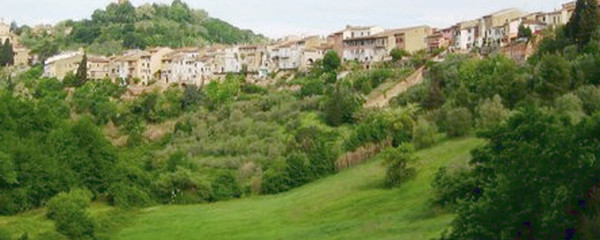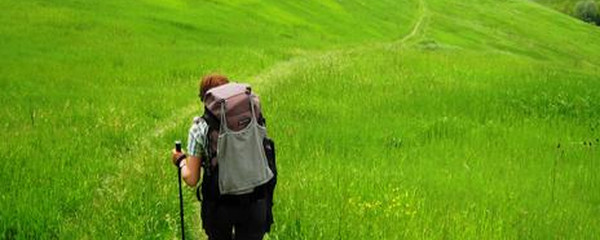Navigation

Blick zurück nach San Miniato

typische Toscana
Gambassi Terme goes back to the Etruscans, and the Castello di Gambassi is documented 1037 for the first time. This place has been well known for producing glass since the Middle Ages and still lives from this business. In the center of Gambassi, we will find a small church with a place in front, from where we have a great view overlooking the lovely, hilly landscape of Tuscany. On the Horizon, we will see the towers of San Gimignano, our destination of the next day. This should stimulate us to look forward to a tasty and nutritious dinner.
Note(s)
The «Via Francigena» is one of the 3 main christian pilgrimage trails of the Middle Ages, the main axis leading from Canterbury to Rome. This documentation currently covers the most frequented section from Lausanne to Rome.
Anmerkungen
Die «Via Francigena» ist einer der 3 christlichen Pilgerwege des Mittelalters, dessen Hauptachse von Canterbury in England nach Rom führt. Diese Dokumentation umfasst vorerst den Abschnitt von Pontarlier nach Rom.
Tipp des Autors
Die Etappen sind in dieser Dokumentation Vorschläge, die jeder Pilger seinen Wünschen anpassen kann. die technischen Daten betreffen aber immer die Annahme, diese Etappen würden jeweils an einem Tag absolviert.
Orte entlang des Weges
San Miniato - Chiesa San Martino - Le Colonne - Calenzano I - Calenzano II - Poggione - Poggio Barco - Campriano - Podere Fontana - La Poggerella - Santi Pietro e Paolo - Castello Di Coiano - Poggio Carlotta - Poggio Tagliato - Podere Cominignoli - Le Colline - Maremma II - Maremma I - San Michelino - Pillo - Borgoforte - Chianna - Chiesa di Christo - Confraternita Misericordia - Commune di Gambassi Terme - Gambassi Terme









